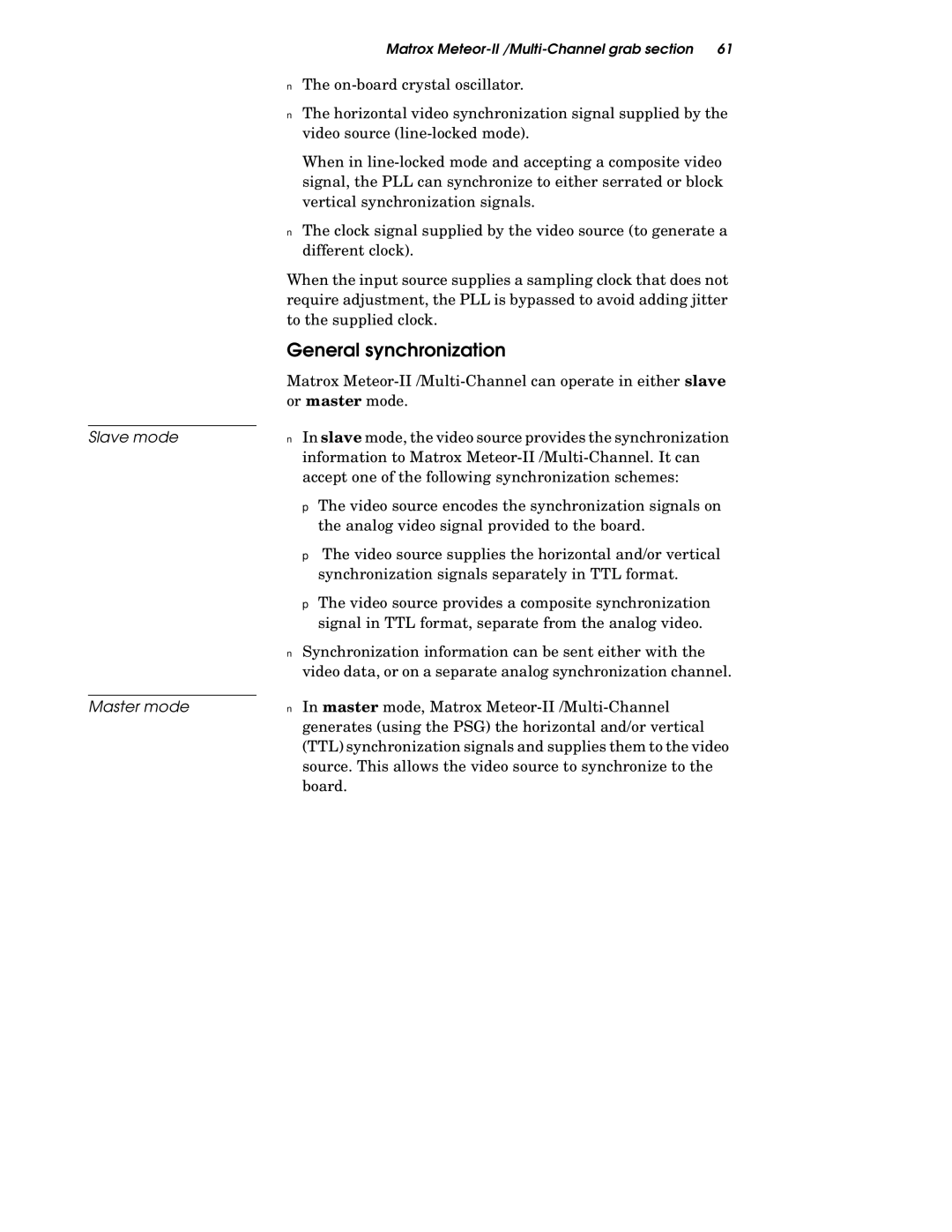|
| Matrox |
| ■ | The |
| ■ | The horizontal video synchronization signal supplied by the |
|
| video source |
|
| When in |
|
| signal, the PLL can synchronize to either serrated or block |
|
| vertical synchronization signals. |
| ■ | The clock signal supplied by the video source (to generate a |
|
| different clock). |
| When the input source supplies a sampling clock that does not | |
| require adjustment, the PLL is bypassed to avoid adding jitter | |
| to the supplied clock. | |
| General synchronization | |
| Matrox | |
| or master mode. | |
|
| In slave mode, the video source provides the synchronization |
Slave mode | ■ | |
|
| information to Matrox |
|
| accept one of the following synchronization schemes: |
|
| ❐ The video source encodes the synchronization signals on |
|
| the analog video signal provided to the board. |
|
| ❐ The video source supplies the horizontal and/or vertical |
|
| synchronization signals separately in TTL format. |
|
| ❐ The video source provides a composite synchronization |
|
| signal in TTL format, separate from the analog video. |
| ■ | Synchronization information can be sent either with the |
|
| video data, or on a separate analog synchronization channel. |
|
| In master mode, Matrox |
Master mode | ■ | |
|
| generates (using the PSG) the horizontal and/or vertical |
|
| (TTL) synchronization signals and supplies them to the video |
source. This allows the video source to synchronize to the board.
